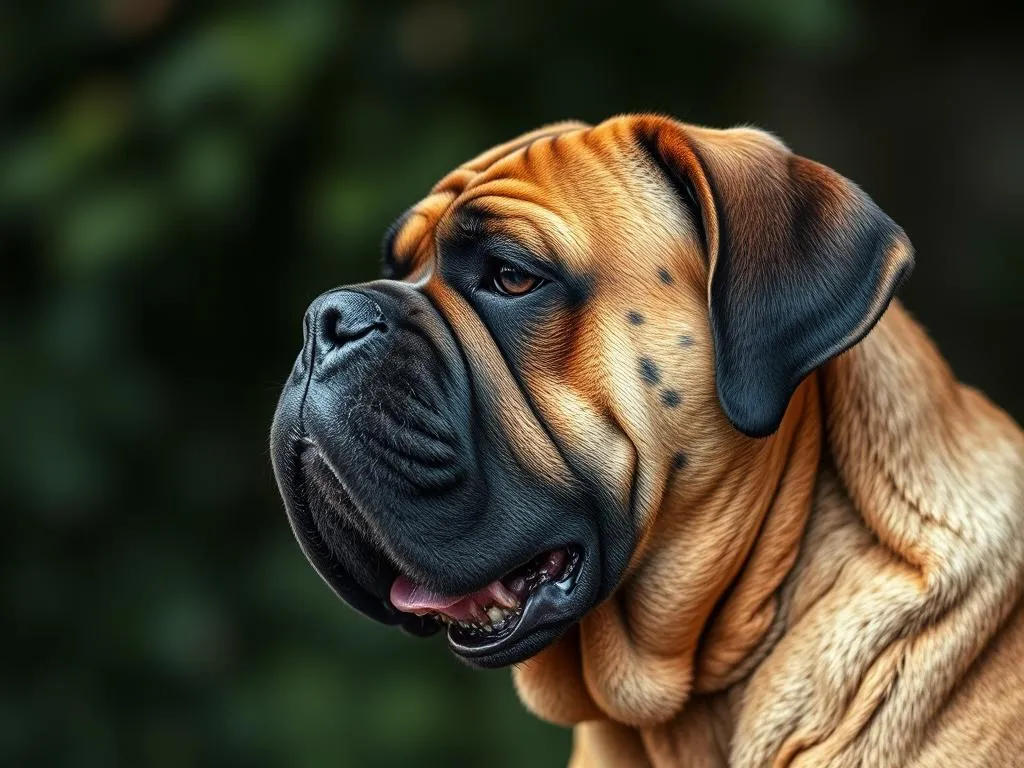
The Bullmastiff is a majestic breed, known for its strength, loyalty, and gentle disposition. These large dogs are not just impressive in size but also in their ability to be both protective and affectionate companions. As with any pet, understanding their care requirements—including shedding—is crucial for potential owners. Shedding can significantly impact your living space, and knowing what to expect can help you prepare for the responsibilities that come with owning a Bullmastiff.
Understanding the Bullmastiff Breed
History and Origin
Bullmastiffs were developed in the 19th century in England by crossing Bulldogs and Mastiffs. Their primary purpose was to serve as guard dogs for estates, protecting against poachers and intruders. With their imposing stature and strong instincts, Bullmastiffs became renowned for their ability to protect while being gentle with families. This balance of strength and gentleness makes them a beloved companion for many households.
Physical Characteristics
Bullmastiffs are large, powerful dogs. Adult males typically weigh between 110-130 pounds, while females usually weigh 100-120 pounds. They stand about 24-27 inches tall at the shoulder. Their coat is short, dense, and comes in various colors, including fawn, brindle, and red. This type of coat contributes to their shedding patterns, which we will explore in depth.
Shedding Patterns in Bullmastiffs
Overview of Shedding
Understanding how much a Bullmastiff sheds is essential for prospective owners. Like all dogs, Bullmastiffs shed as part of their natural life cycle. Shedding allows them to lose old or damaged hair and maintain a healthy coat. However, the amount and frequency can vary based on several factors such as genetics, environment, and overall health.
Seasonal Shedding
Bullmastiffs typically experience seasonal shedding, meaning they will lose more hair during certain times of the year. Expect increased shedding in the spring and fall as they transition between winter and summer coats. During these periods, owners may notice more hair around the house and on furniture. While daily brushing can help manage this, it’s important to remain patient and understand this is a natural process.
Comparison with Other Breeds
When comparing shedding levels, Bullmastiffs shed moderately compared to other large breeds. Breeds like Labrador Retrievers shed heavily year-round, while Bullmastiffs have specific shedding seasons. This can make Bullmastiffs a somewhat more manageable option for those concerned about excessive fur in their homes.
Managing Shedding in Bullmastiffs
Grooming Techniques
Regular grooming is vital in managing shedding. Owners should invest in quality grooming tools such as:
- Slicker Brushes: These are effective for removing loose hair and debris.
- Rubber Grooming Mitts: These can help remove loose hair while also massaging the dog’s skin.
Aim for grooming sessions at least once a week, increasing frequency during shedding seasons. This will not only help control shedding but also promote a healthy coat.
Bathing and Coat Care
Bathing Bullmastiffs should be done sparingly—generally once every few months unless they get particularly dirty. Overbathing can strip the coat of natural oils, leading to skin issues and increased shedding. When you do bathe them, use a gentle, dog-friendly shampoo to keep their skin healthy. Additionally, using a conditioner can help keep their coat smooth and shiny.
Dietary Considerations
Nutrition plays a crucial role in coat health and can influence shedding. A diet rich in omega fatty acids can promote a healthier coat. Consider foods that include fish oil or flaxseed oil, or consult with your veterinarian about appropriate dietary supplements. A well-balanced diet will not only minimize shedding but also enhance the overall health of your Bullmastiff.
Health Factors Affecting Shedding
Common Health Issues
While shedding is normal, excessive shedding can indicate underlying health issues. Skin conditions such as dermatitis or fungal infections can lead to increased shedding. Allergies—whether environmental or food-related—can also cause a Bullmastiff to shed more than usual. If you notice any drastic changes in your dog’s shedding patterns, it’s essential to investigate further.
When to Consult a Veterinarian
It’s crucial for Bullmastiff owners to be aware of signs that may indicate health problems. If you observe:
- Significant hair loss: Patches of hair missing could suggest a health issue.
- Red, inflamed skin: May indicate allergies or infections.
- Excessive scratching or biting: Could signify skin discomfort.
If these symptoms occur, consult a veterinarian to determine if there’s a health concern contributing to excessive shedding.
Cleaning Tips for Bullmastiff Owners
Effective Cleaning Tools
Managing pet hair in your home can be a challenge, but the right tools can make a difference. Consider investing in:
- High-Quality Vacuum Cleaners: Look for those specifically designed for pet hair.
- Lint Rollers: These are quick and convenient for removing hair from clothing and furniture.
- Pet Hair Removers: Products like rubber brooms can be effective for sweeping up hair from carpets and floors.
Maintaining a Clean Home
To minimize pet hair in your home, establish a regular cleaning routine. Here are some tips:
- Daily Vacuuming: A quick vacuum of high-traffic areas can help keep hair at bay.
- Furniture Covers: Use washable covers on furniture to catch hair before it settles into fabric.
- Grooming Outside: Whenever possible, brush your Bullmastiff outside to minimize indoor mess.
These practices will go a long way toward keeping your home clean and comfortable for both you and your dog.
Conclusion
Understanding how much a Bullmastiff sheds is an integral part of responsible pet ownership. These dogs, with their rich history and unique characteristics, bring much joy and companionship. While they do shed, proper grooming, diet, and health management can help mitigate the impact of shedding. As with any breed, being prepared for their needs will ensure a happy and healthy relationship with your Bullmastiff.
FAQs
How often do Bullmastiffs shed?
Bullmastiffs typically shed moderately year-round, with increased shedding during spring and fall.
What is the best way to reduce shedding?
Regular grooming, a proper diet, and maintaining a clean living environment can help reduce shedding.
Are Bullmastiffs hypoallergenic?
No, Bullmastiffs are not hypoallergenic. They shed, which can trigger allergies in sensitive individuals.
Can shedding be linked to diet?
Yes, a well-balanced diet rich in essential fatty acids can contribute to coat health and potentially reduce shedding.
By understanding the shedding patterns and care requirements of Bullmastiffs, potential owners can make informed decisions and create a loving environment for their new furry friend.









